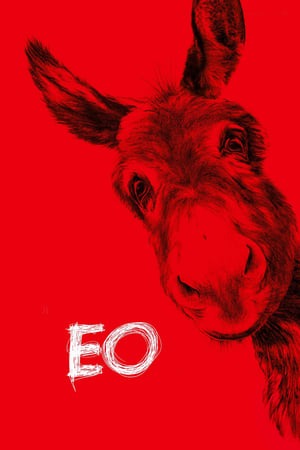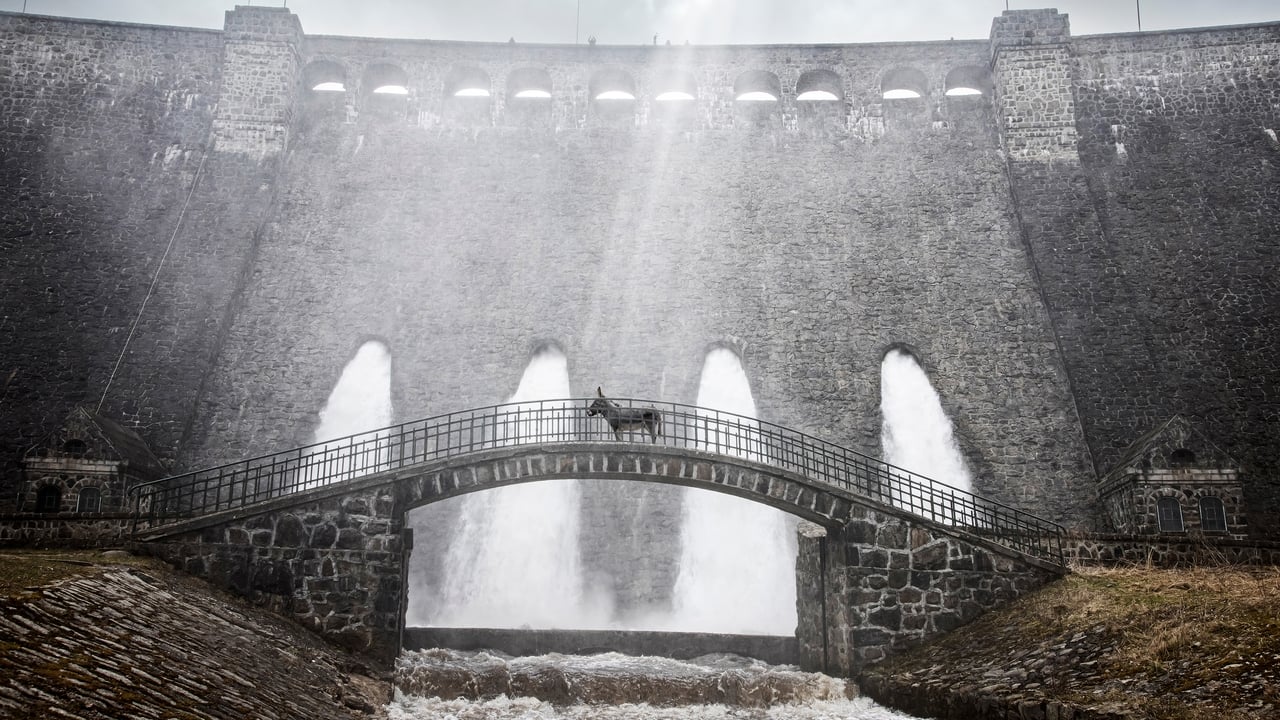
Even for a director with more than 60 years of experience, remaking a canonical classic represents one hell of a daunting challenge. Now, to be both clear and precise, Jerzy Skolimowski’s 18th feature, EO, does not explicitly present itself as a new version of Au hasard Balthazar, directed by the great Robert Bresson and released in 1966 (when Skolimowski, now 84, was 28; he’d already made his feature debut, Identification Marks: None, by that point). There’s no “based on” or “inspired by” acknowledgment, and the two don’t share any specific incidents that I can recall. Still, no film about a donkey getting passed from owner to owner can possibly avoid that comparison, and Skolimowski hasn’t been coy about Balthazar’s enormous, inciting influence on EO, noting in multiple interviews that it remains the only movie that’s ever made him cry. And the question remains: Why attempt to replicate, in any form or capacity, a work that’s widely considered very close to perfect? At this writing, Balthazar is ranked 34th on They Shoot Pictures, Don’t They?’s pretty damn authoritative list of the 1000 most acclaimed films of all time, just after Touch of Evil and Lawrence of Arabia and Sunset Boulevard (and two notches ahead of a little old chestnut called Casablanca). Skolimowski is admittedly a major filmmaker himself—1970’s Deep End is ranked too low on They Shoot Pictures’ list for my taste, at #817, and 1982’s Moonlighting should damn well be on it somewhere—but it’s hard not to think, when you first learn about EO, that he’s made a spectacularly foolhardy decision, reminiscent of Gus Van Sant’s Psycho.
I’m here to tell you that he hasn’t, but first I must make a shameful confession: Au hasard Balthazar, despite its singular aesthetic and emotional purity, doesn’t do a whole lot for me. “Who gives a shit?” is certainly a fair response to that statement, but I think it’s worth briefly explaining the root of my unorthodox opinion, because it’s directly related to the reasons why EO, which shared the Jury Prize (third place, more or less) at Cannes earlier this year, is very much its own animal, rather than the pointless, misguided carbon copy that one might fear. Both films, as previously noted, follow a single donkey as it’s passed from owner to owner, and both of them assemble, “incidentally” (which is to say, quite purposefully, but without calling undue attention to the fact), a compendium of human nature over the course of that donkey’s long journey. But for Bresson—in Balthazar more than in any of his other films, with the possible exception of The Devil, Probably (which I also dislike)—human nature mostly amounts to wanton cruelty, or, at best, destructive indifference. Almost without exception, every character who encounters Balthazar the donkey abuses him in some way; the movie consists of scene after uninflected scene in which an innocent creature suffers for no discernible reason. Those last 14 words embody what I least enjoy in cinema. When I sense that a film exists primarily to inspire pity in the viewer, I tend to emotionally disengage. You may find that idiotic, and I’ll spare you my lengthy defense. (Précis: Generating pity is easy, truly great drama traffics in the thorny and difficult.) Point is, Au hasard Balthazar spends 95 minutes showing us that people are awful and prey upon the defenseless. It’s grueling to watch.
EO isn’t exactly what you’d call a barrel of laughs either, and those who have a hard time sitting through even simulated scenes of animal abuse should know that it does feature one truly horrible (but entirely simulated) moment of same. Nonetheless, this is a very different experience—one that employs Balthazar’s structural template but is in certain respects diametrically opposed to what Bresson was doing. For one thing, Skolimowski (who co-wrote the screenplay with his wife and regular collaborator, Ewa Piaskowska) anthropomorphizes the film’s equine protagonist, named EO presumably in onomatopoeic tribute to a donkey’s braying noise (it’s as much “eee-oh” as “hee-haw”); where Bresson’s shots of Balthazar remain stubbornly stoic, EO gets what are unmistakably reaction shots, one of which even sees him shed a tear. One could argue that this is overly manipulative, but it’s tempered by another crucial distinction: This movie doesn’t treat its donkey exclusively as a punching bag. Frequently, EO serves merely as an impassive observer, seemingly mystified by the crazy bipedal hairless apes that cross its path; I was actually reminded at one point of my favorite line from Babe: Pig in the City: "Ferdinand the Duck. Witness...to insanity." Innocent people still suffer, at times—there’s one truly shocking act of violence—but EO doesn’t programmatically weaponize our innate feelings of compassion for helpless animals with big soulful eyes. (Though this donkey isn’t altogether helpless.)
More crucially—and more spectacularly—EO isn’t always surrounded by human beings, abusive or otherwise. Skolimowski has zero interest in duplicating Bresson’s famously ascetic style, and the film goes deliriously maximalist during a stretch in which EO manages to escape his latest owner and spends some time just wandering through the Polish countryside. This film’s nocturnal landscapes can only be called monumental, and the awe they arouse gets amplified by the degree to which both DP Michał Dymek’s camera and composer Paweł Mykietyn’s score go absolutely nuts in tandem, creating a Malick-on-acid sensation that I frankly never wanted to end, even as I don't know how it could possibly be sustained for much longer than it is. One shot of EO relative to a windmill between some hills has been so majestically composed, and gets such grandiose symphonic accompaniment, that you feel as if the donkey might be seeing God, or as if you might be. And I’m a staunch atheist, so we’re talking about some damn potent imagemaking. Other scenes are much more naturalistic, but Skolimowski keeps seizing opportunities to make striking use of color, particularly bright neon red (which makes its first, highly disorienting appearance in the movie’s opening seconds). You really can’t get much more anti-Bresson than EO repeatedly does, and while I can understand why those who treasure Au hasard Balthazar might find this film comparatively crass, I welcomed the sheer sensory overload.
That said, this is still fundamentally a succession of disconnected interludes, and not all of them are equally strong. EO loses its way significantly in the home stretch, when the aforementioned shocking act of violence leads to the donkey being “rescued” by a young man who’s so wealthy that he apparently just abandons cars when they run out of gas (and who also seemingly has some sort of ridesharing app for vehicles with horse trailers attached; the movie skips past how he secures one in the middle of the night). Turns out this young man’s mother is a countess, and it further turns out that the countess is played by Isabelle Huppert; I love the woman to death, but her presence here, in a single donkey-free melodramatic scene that involves much smashing of china and hurling of cutlery, serves only as an unwelcome distraction. (In my theater, it prompted a collective “That’s Chappie”-style wave of loud whispers, as EO features no other actors whom an American audience would likely recognize.) And Skolimowski’s ending, while admirably brusque—in the one place, ironically, that saw Bresson allow for some conventional catharsis—doesn’t seem especially plausible, which blunts its effect. Ultimately, there’s a ceiling on how great this film could really be: It’s conceptual at heart, and the concept had already been claimed and fully explored, such that even a radical departure in tone and theme still feels vaguely redundant. If you were braced for another film that could theoretically be called Jackass Number Two, however, get ready instead for a pleasant surprise.
One of the first notable online film critics, having launched his site The Man Who Viewed Too Much in 1995, Mike D’Angelo has also written professionally for Entertainment Weekly, Time Out New York, The Village Voice, Esquire, Las Vegas Weekly, and The A.V. Club, among other publications. He’s been a member of the New York Film Critics Circle and currently blathers opinions almost daily on Patreon.






